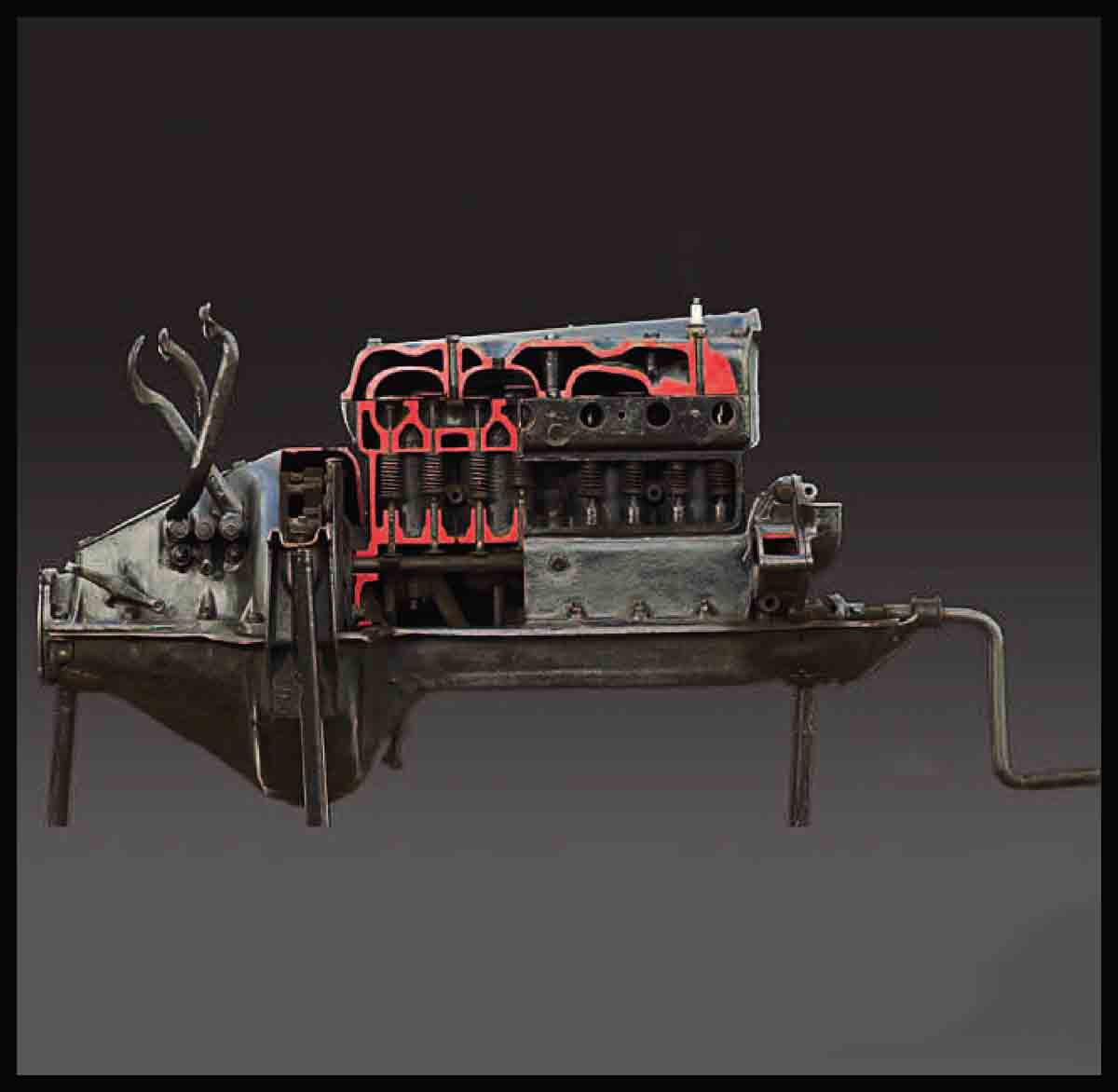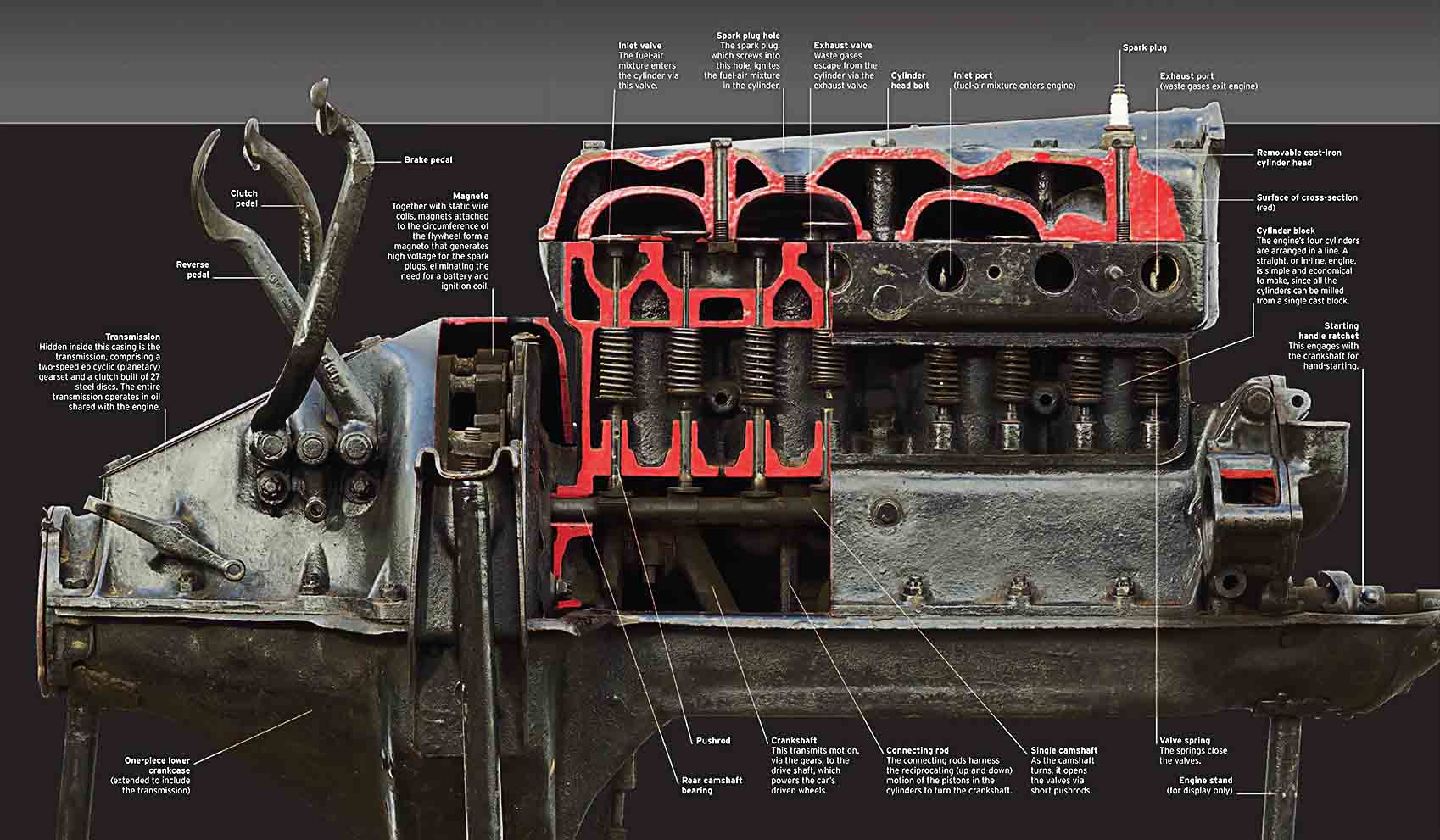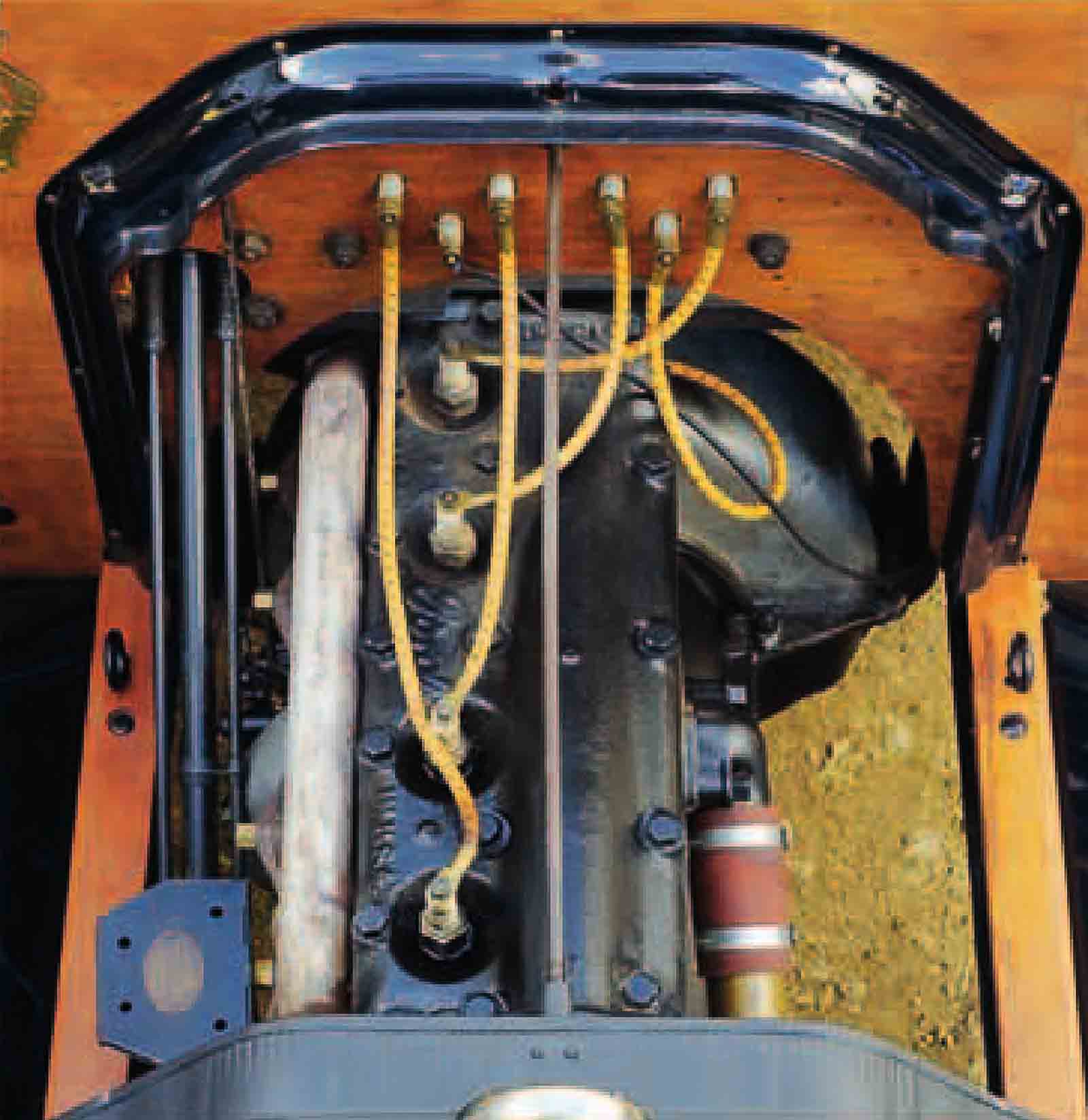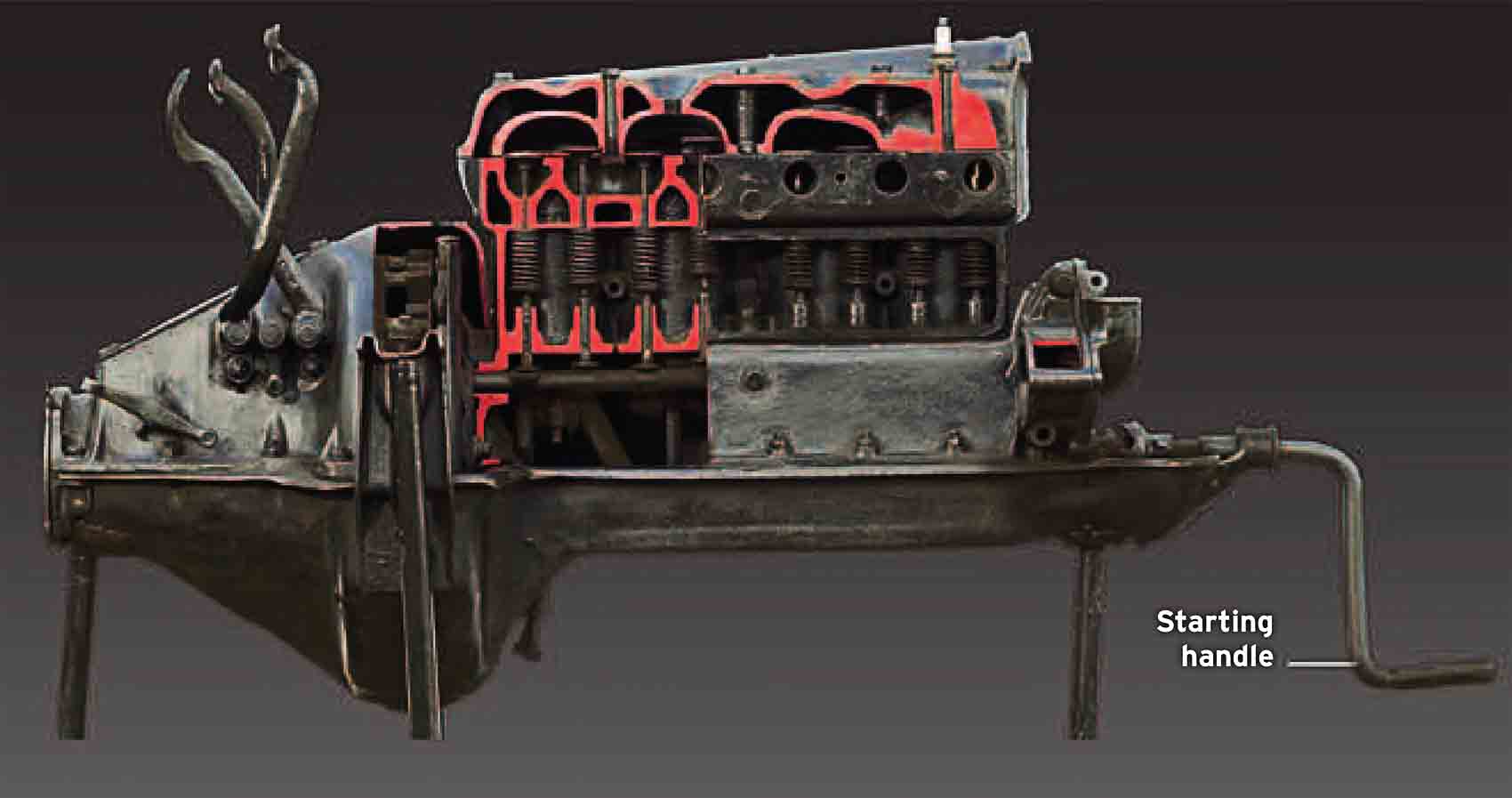
Ford Model T—straight-four
Henry Ford’s iconic Model T-the car that would turn millions of Americans into drivers following its launch in 1908-was remarkable for more than the efficient production-line methods used to build it. The “Tin Lizzie,” as it became known, also boasted many novel engineering features, particularly in the design of its simple but rugged engine and transmission.

KEEPING IT SIMPLE
Ford and his chief engineer, C. Harold Wills, were determined to make the Model T tough enough to endure America’s unpaved roads, but light enough to ensure adequate performance from its compact, low-power engine. The reliability of the engine and transmission were vital, so both were kept simple. Yet Ford and Wills did not shy away from incorporating innovations, such as a removable one-piece cylinder head to ease servicing, and a Thermo Syphon cooling system that supposedly made a water pump unnecessary. However, water-pump kits were popular subsequent purchases among Model T owners.

ENGINE SPECIFICATIONS
| Dates produced | 1908-1941 |
| Cylinders | Straight-four |
| Configuration | Front-mounted, longitudinal |
| Engine capacities | 176.7 cu in (2,896 cc) |
| Power output | 20 hp |
| Type | Conventional four-stroke, water-cooled gas engine with reciprocating pistons, magneto ignition, and a wet sump |
| Head | Side-valves actuated by short pushrods; two valves per cylinder |
| Fuel System | Single Holley carburetor, gravity-fed |
| Bore and Stroke | 3.75 in x 4.00 in (95.3 mm x 101.6 mm) |
| Power | 6.9 hp/liter |
| Compression Ratio | 4.5:1, later reduced |
Running changes
The basics of the engine stayed the same throughout its lifetime, once the water pump of early models had been replaced by the Thermo Syphon system. Some adjustments were made to the compression ratio to account for changeable fuel quality. It peaked at 4.5:1, before being pegged at 3.98:1 from 1917.

Uphill, Model T style
In the drive for simplicity, Henry Ford built the Model T without a fuel pump, relying instead on gravity to feed fuel to the carburetor. One consequence of this was that when the fuel level in the tank was low, it was sometimes necessary to reverse the car up hills.
It is a quote. The Definitive Visual History Of The Automobile 2011




